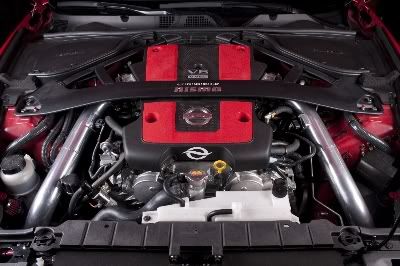
 |
The complete patented STS Remote-Mount Intercooled Turbo System is an amazing way to turn your ordinary Nissan 370Z into an super import. We have a special offer to the first
|
|||||||
|
|
LinkBack | Thread Tools | Display Modes |
|
|
#1 (permalink) |
|
A True Z Fanatic
|
The complete patented STS Remote-Mount Intercooled Turbo System is an amazing way to turn your ordinary Nissan 370Z into an super import.
We have a special offer to the first buyer of this kit. 130+ HP Bolt-On Gains. A combination of our patented remote-mount technology combined with an intercooler provides the lowest consistent air intake temperatures over any other forced induction system on the market. Owners of otherwise stock vehicles will experience 470whp @ 7 pounds of boost (Stock motor), but also receive the benefit of increased fuel economy over the competition. The beautifully tuned exhaust note from an STS Remote-Mount Turbo System is sure to put a grin on your face as you flyby all those other imports.     Nissan 370Z Upgrade options for modified engines. Being the premier source for Remote-Mount Turbo Systems, STS has a number of upgrade options for 370Z owners who have plans of modifying their VQ37 motors.     Nissan 370Z Turbo Kit specs Turbo: STS 620hp capable Turbocharger Wastegate: STS/TurboSmart 38mm Wastegate Blow-Off Valve: STS/TurboSmart 52mm Blow-Off Valve Intercooler: Front Mount Air-Air Intercooler Tuning : UpRev Tuning, Fuel Pump and 600cc Injectors Warranty: One Year Parts Warranty Available Options -Methanol Injection Kit -800 hp rated Ball bearing turbo. -Electronic Boost Controller And much much more. Please PM for details and pricing. 
|
|
|
| Bookmarks |
|
|
 Similar Threads
Similar Threads
|
||||
| Thread | Thread Starter | Forum | Replies | Last Post |
| CA, Twin Turbo 370z | AndyZ | 370Z For Sale | 8 | 12-11-2010 12:07 AM |
| Greddy Tuner Turbo Kit - limited time special! - FREE Ti-C Greddy turbo exhaust! | GT Motoring | Forced Induction | 2 | 07-17-2010 05:57 AM |
| Greddy Tuner Turbo Kit - limited time special! - FREE Ti-C Greddy turbo exhaust! | GT Motoring | Drivetrain/Engine | 0 | 07-16-2010 07:26 PM |
| GTM Twin Turbo 370z | evse82 | Australia/New Zealand | 6 | 09-22-2009 11:05 AM |
| Twin Turbo Kit for 370z | soaka1 | Engine & Drivetrain | 3 | 05-14-2009 07:31 AM |